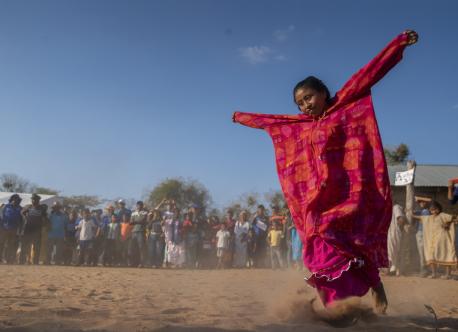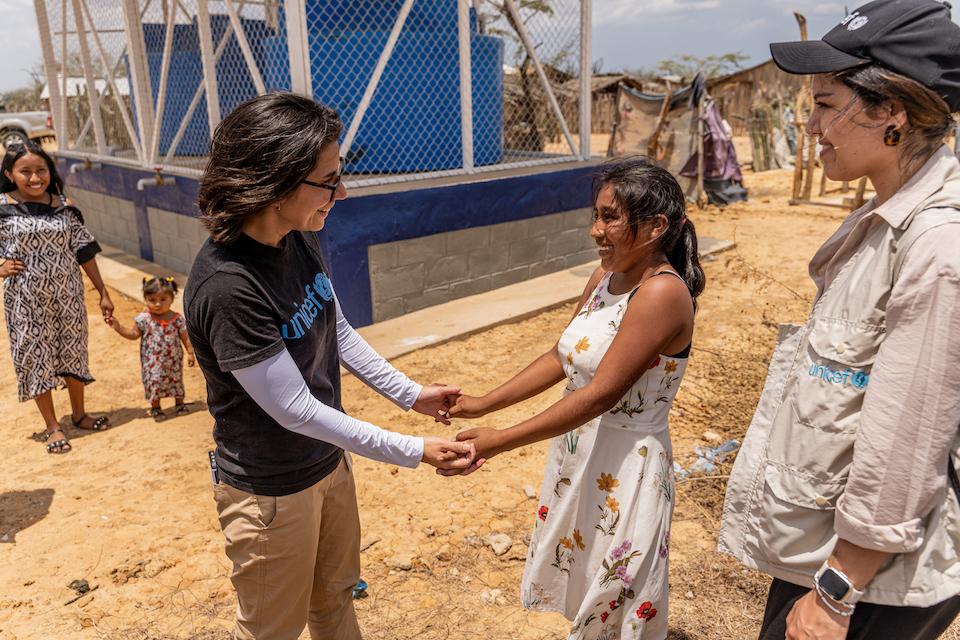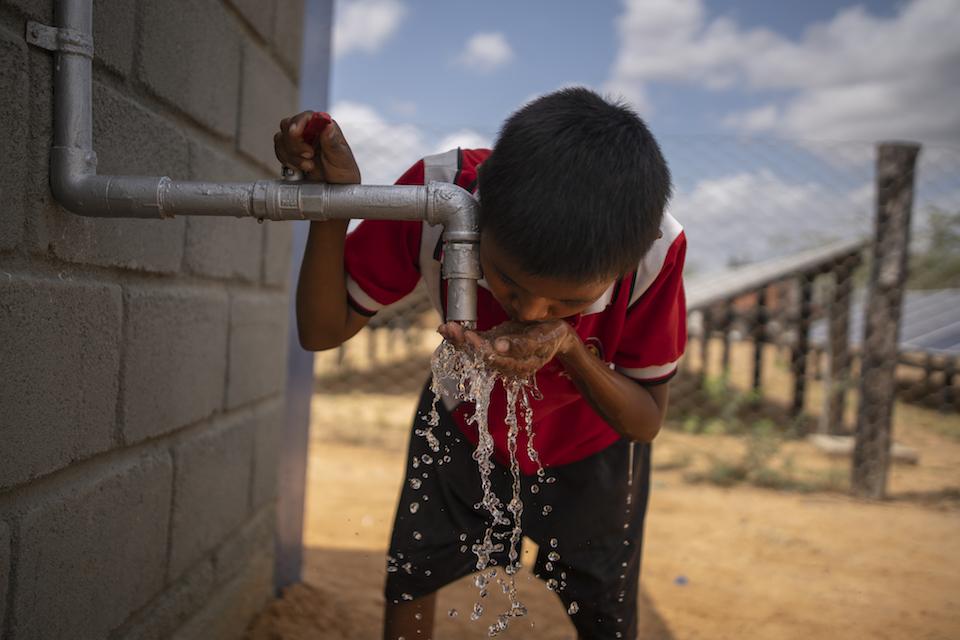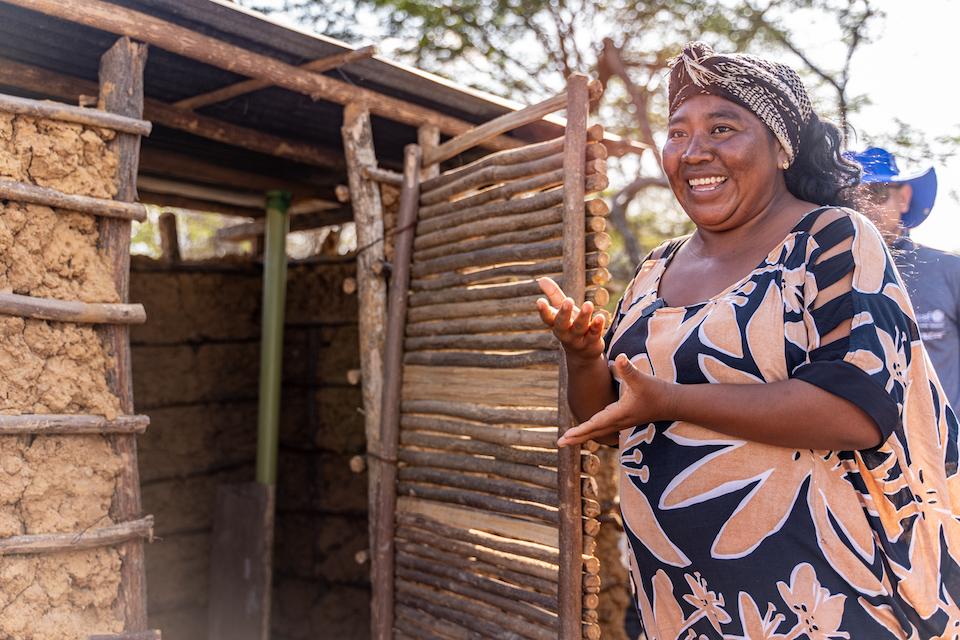
Water for the Wayúu: A Successful Partnership in Colombia Continues to Grow
In partnership with UNICEF, the Halü Foundation and the indigenous Wayúu people of northern Colombia, the Baxter International Foundation is helping bring safe water and sanitation to thousands. The results offer a roadmap for increased success.
The ancestral lands of the indigenous Wayúu people in northern Colombia are dry, windy and dotted with the candelabra-like arms of cardon cacti. Scrub bushes and trees give way to vast fields of salt, which is mined and used to supply more than half the country.
Though it's surrounded by the Caribbean Sea and the Gulf of Venezuela, water safe enough for drinking or hygiene is hard to come by on La Guajira Peninsula. In some remote communities, only 4 percent of Wayúu people and their children have access to quality water sources, according to the Colombian Government’s Department of Statistics. This is often compounded by the lack of access to adequate water, sanitation and hygiene (WASH) services in health care facilities.
Without taps to turn, residents are forced to pay for water to be trucked in. For those who can’t afford the cost, women and girls collect water from nearby creeks. The brackish water has high levels of salt and other contaminants, which leave children under 5 especially susceptible to diseases and acute diarrhea.
But as a unique partnership between UNICEF and the Baxter International Foundation continues into its third year, not only are thousands of families here being reached with rehabilitated water systems, they are also making strides toward operating and sustaining them themselves. In particular, women and girls are taking on leadership roles in local water committees.
Water committee members — mainly women and adolescents — take responsibility for maintaining improved water systems

In Guarerapo, a small community near Uribia, one such Water Committee — the majority of its women and adolescents — recently greeted visitors from UNICEF and the Baxter International Foundation. Displaying full knowledge of the technical aspects of their community water system, the committee members took turns explaining the interworking parts.
These parts included solar panels that supply energy for a water pump; a 30,000-liter storage tank full of cloudy, green water, unsuitable yet for drinking; a reverse-osmosis filtration system that purifies the raw groundwater; and a second tank that holds and supplies the safe, now clear, water from large taps. These second tanks in turn fill trucks that supply the nearby school and houses. There is also a new community handwashing station — with two sinks, one at adult height and one set lower for children.
Fourteen-year-old Carmen Epinayú, a member of the Water Committee, says, “Last year, we didn't get to see clean water. We drank from the rain, from the jagüey (surface-level, untreated creeks). Now, I'm happy to have water here in this settlement, available for all families.”
New latrines and handwashing education help communities end open defecation

The same partner program has a second important component: sanitation and hygiene. Specifically, this means working with Wayúu communities to eliminate open defecation practices, one of the root causes of illness and death among Wayúu children.
The second visit of the day was to a rural community of 570 people called Panerrakat 1. UNICEF staff and Baxter International Foundation representatives arrived to celebrate the community’s open defecation free certification, meaning all homes have sanitation facilities. Panerrakat 1 is the eighth community in the region to have ended the practice, thus far.
We no longer have to relieve ourselves in the bush. I go all the time to the bathroom that my mother made for us.
The program is based on the Sustainable Total Sanitation and Hygiene Programme (SAHTOSO) system, a UNICEF program that has been successfully implemented with indigenous communities in Guatemala. Involving both local materials and know-how, the program promotes the self-construction of dry-toilet structures, built from cardon cactus wood and gritty mud chinking, turned hard as concrete.
Leivis Ipuana, a Wayúu mother of three, is one of the community leaders who now has her own latrine at home. With "Wayúu engineering," as she calls it, she built her bathroom for herself and her children, Edilson, 10, Esleider, 8, and Edilsa, 5. Edilson was the first to use it, even before it was finished, because he was so excited. "We no longer relieve ourselves in the bush," says one of her children. "I go all the time to the bathroom that my mother made for us.”
Safe toilet facilities close to home protect women and children from the risk of assault

In this community, 22 houses are now equipped with new latrines nearby. Such proximity means women and children, especially, no longer need to leave a zone of safety to find privacy. They can also use the “tippy tap” handwashing system, made from a pulley system with a wooden foot lever and a plastic bottle, to wash their hands afterward. Each entire bathroom costs as little as $80 to build.
Leivis said that other Wayúu visitors comment on how privileged she must be to have a bathroom. She tells them that it’s not a privilege; it’s knowledge. And she offers to show them how to build one for their own family.
This partnership has had far-reaching impacts in La Guajira. The collaboration has helped UNICEF reach more than 570 people in the region with access to outhouses. More than 1,300 people have attended hygiene workshops and 2,482 people now have safe water access. The goal is to reach 6,000 children and their families with safe water, and to have 21 communities declared free of open defecation. The program’s success is also encouraging the local and national governments to deliver water services to the region.
The partnership has been life-changing for many families and exemplary in its innovative collaborative approach, one rooted in the Baxter International Foundation’s desire to be not just a donor, but a true partner in helping support the people of Colombia and the Wayúu community.
UNICEF works around the world to ensure all children have access to the safe water and sanitation they need to survive and thrive. Your contribution can make a difference. Please donate.


